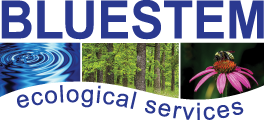By: Sarah Voska (September 2018)
Man and Fire have a sort of symbiotic relationship. The discovery of fire stands alongside agriculture, the wheel and the steam engine as one of the most revolutionary inventions of human civilization. Of course, fire has been around for, well, forever…man simply recognized its importance and learned to harness its power and control it. Prior to man’s ability to create fires for themselves, lightening events caused fires that proved quite beneficial to hunter & gatherer communities. It drove scattering animals towards them for easy prey, and it cooked the entire landscape, leaving foraged food more edible and nutritious. Once they learned how to control it, early humans used fire for cooking as well as to a management tool for the tall grass savannas. The Great Plains were subjected to regular controlled burns by Native Americans, as a means of managing plants, improving the quality of grazing materials, as well as to control bison herds’ movements.
Fire is an effective management technique for prairies & savannas. It is lower in cost than if the same amount of plant material was tackled with mowers, chain-saws or herbicide. It also increases available nutrients in the soil, kills invasive Eurasian grasses and knocks back invasive shrubs & trees. It creates ideal habitat conditions for native prairie grasses, who withstand fire by keeping large stores of energy in its root system.
It can certainly be nerve-wracking to see the high plumes of smoke and licks of flames arching overhead, but controlled burns are carefully managed to prioritize safety. An IDNR certified burn manager is on site for the whole day, accompanied by a trained & certified prescribed burn crew. The burn manager is trained to look ahead at weather conditions and continue to reassess throughout the day to keep everyone safe. The crews are equipped with tools, including a “swatter” tamper or a backpack water pump, to control the spread of fire.
After a burn, the ground will, of course, be charred and fairly barren. This allows for light to penetrate to the soil and new seeds to grow. The prairie plants hiding down in their roots begin to sprout anew, the soil more nutritious than before, and with less competition. Like a phoenix, the prairie rises back up from the ashes and renews the landscape, creating beautiful habitat for small mammals, deer, frogs and insects.
Prescribed burns can improve the health of the beautiful prairies at the center of your community. To learn more about using native plants to build, restore, and maintain natural habitats, visit us at BluestemEco.com
Bluestem Ecological Services is a sustainable company that builds, restores and maintains native ecosystems. Our goal is to bring elements of the original Midwest landscape back to its natural state. We develop partnerships based on a balance of people, the environment, and most of all economic value.
